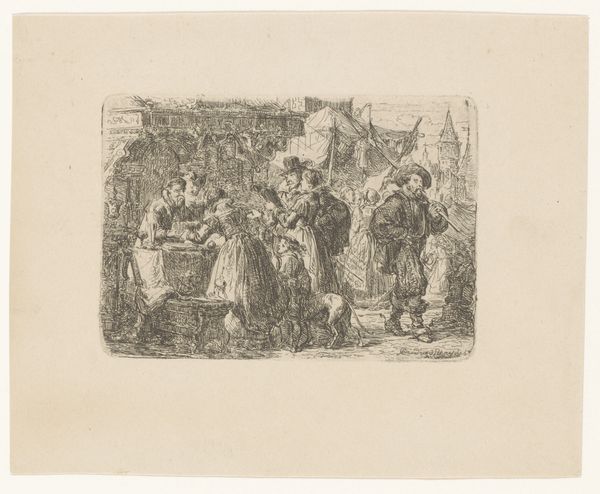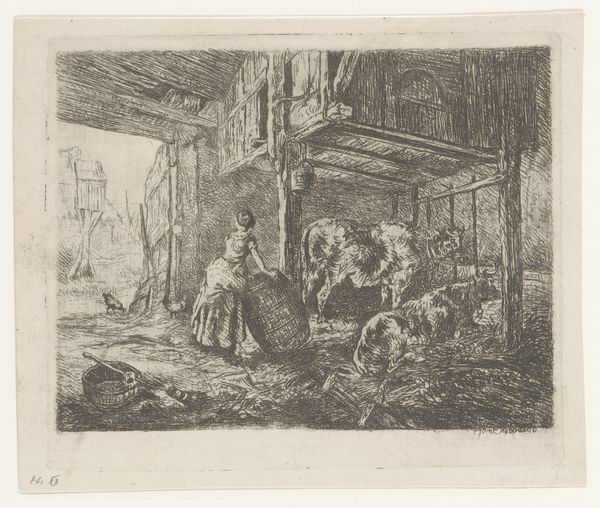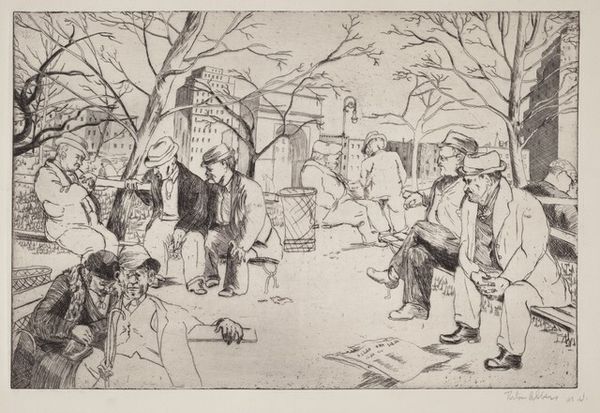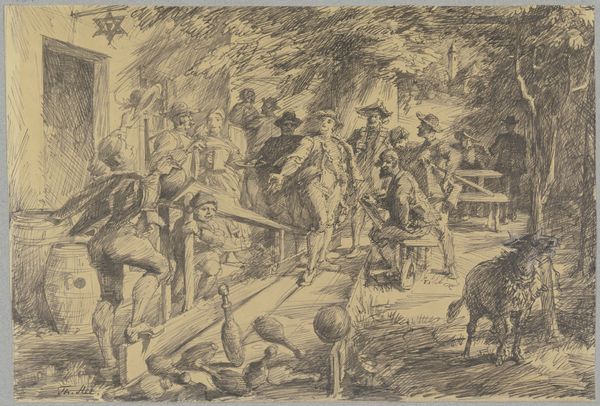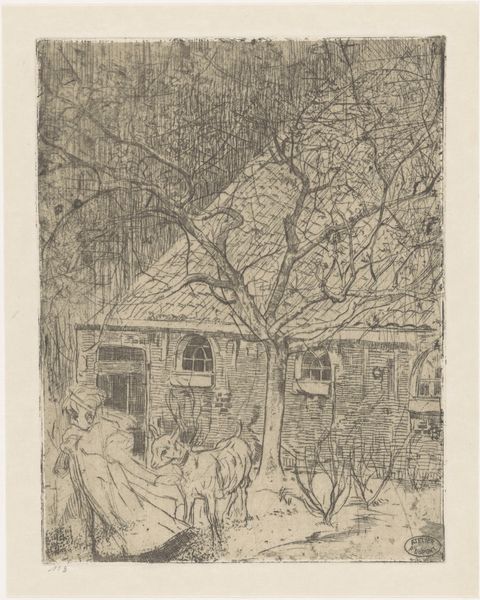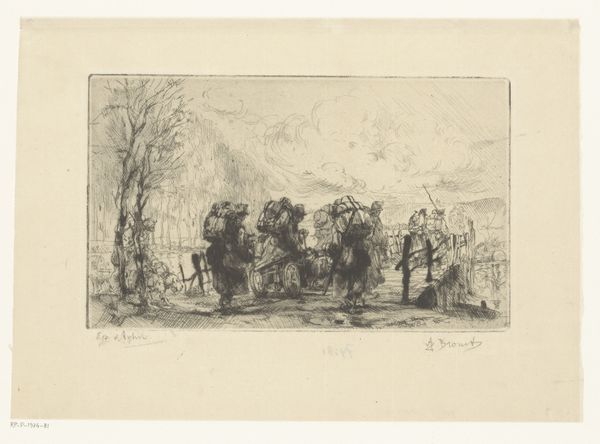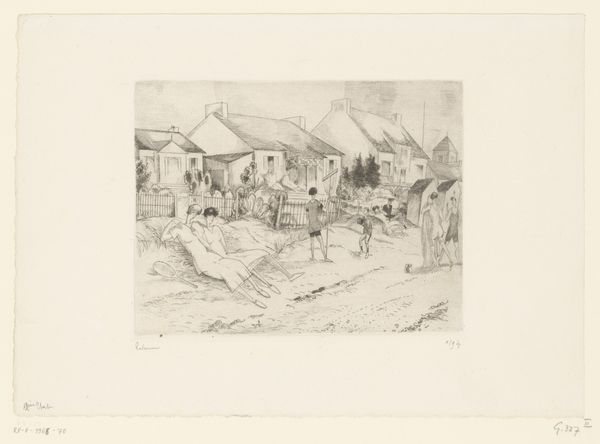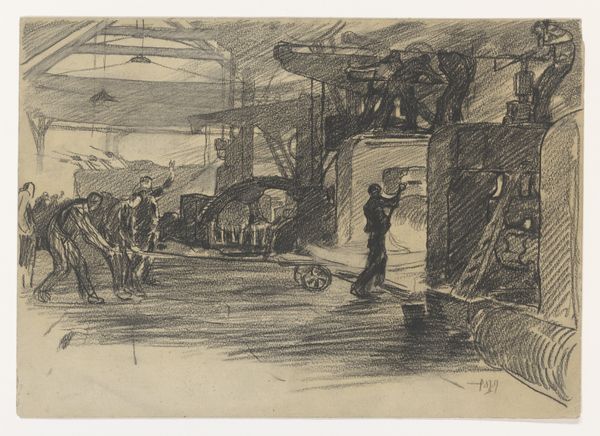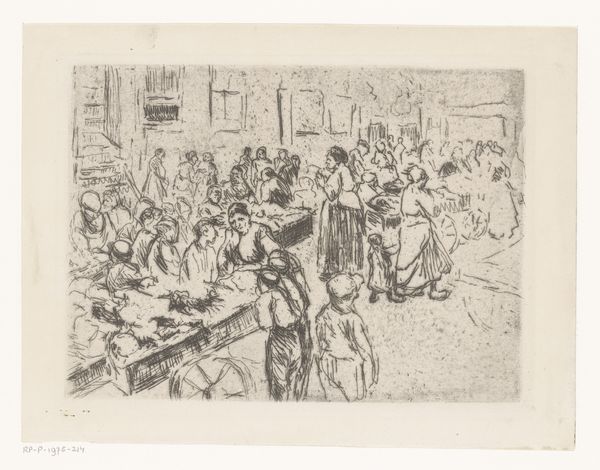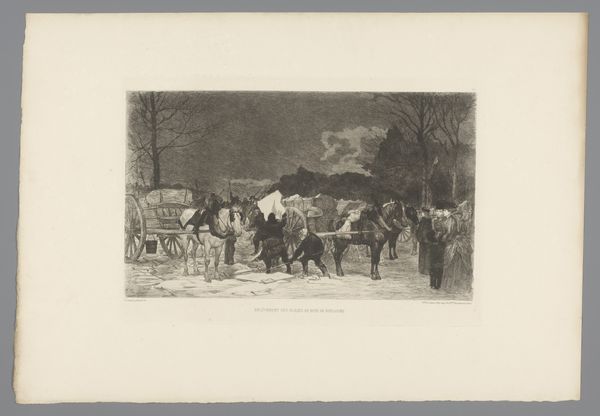
print, etching
# print
#
etching
#
cityscape
#
genre-painting
#
realism
Dimensions: height 159 mm, width 238 mm
Copyright: Rijks Museum: Open Domain
Editor: So, here we have "Straatmarkt" by Jan de Jong, likely made between 1874 and 1901, and it's an etching. It's incredibly detailed, depicting a bustling street market scene, almost a slice of everyday life back then. What strikes me is how it captures the energy, but also a kind of grit, you know? What do you see when you look at this piece? Curator: Well, I immediately think about the social function of art in depicting urban life in the late 19th century. Genre scenes like this one become really popular, not just for artistic value but for documenting and, in a way, legitimizing the experience of ordinary people in rapidly changing cities. Notice how the composition draws our eye into the market. What kinds of societal shifts do you think might make this type of imagery important? Editor: I guess as cities grew and became more diverse, it might have been a way for people to understand, or even idealize, different social classes and daily routines they might not otherwise encounter? Curator: Precisely! And etching as a print medium makes art more accessible, allowing for wider distribution. De Jong is participating in a larger artistic project of representing, and thus solidifying, a sense of Dutch national identity centered around urban spaces. Also, look at the way labor is presented; the sellers, the man pulling the cart—how does that inform your reading of it? Editor: It’s like highlighting the different roles everyone plays in this little ecosystem, but it's also maybe pointing out the economic disparity – some are vendors, others are laborers… Curator: Yes, exactly! So, looking at "Straatmarkt" goes beyond appreciating the aesthetics; it invites us to consider the broader socio-political dynamics at play and how they are represented, even celebrated, through art. Editor: I never thought about it that way. It’s not just a pretty market scene, it’s a commentary on the era, presented to a wider audience through its medium. That's a great insight. Curator: It makes you consider how the art market and socio-economic realities really do impact an artwork's production and viewing, doesn't it?
Comments
No comments
Be the first to comment and join the conversation on the ultimate creative platform.
